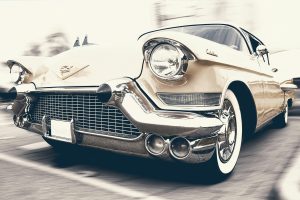Cars in Popular Culture and Film
In today’s society, cars have become more than just a means of transportation. They have made their way into popular culture and have become symbols of freedom, status, and even rebellion. We see cars portrayed in various forms of media, but perhaps no other medium has a bigger impact on how cars are perceived than film. From classic road trips to high-speed chases, cars have taken center stage in some of the most iconic scenes in cinema history. In this article, we’ll take a nostalgic trip down memory lane and explore the relationship between cars and popular culture in film.
The Rise of Cars in Film
Ever since the invention of the first car, filmmakers have been finding ways to incorporate these four-wheeled machines into their stories. In the early days of cinema, cars were used as a simple mode of transportation for characters. However, as technology advanced and car ownership became more commonplace, filmmakers began using cars to add depth to their characters and advance the plot.
One of the earliest films to feature a car was the 1903 French silent film, “The Great Train Robbery”. The film depicted a chase scene between a car and a train, which set the precedence for future films to include thrilling car chases. Decades later, in the 1960s and 1970s, the rise of the muscle car culture gave way to a new genre of films that focused on cars and racing, such as “Bullitt” and “The Fast and the Furious”. These movies not only featured high-speed car chases, but also showcased the adrenaline-fueled lifestyle of the characters.
Iconic Cars in Film
When we think of cars in popular culture and film, there are some iconic vehicles that immediately come to mind. One such car is the DeLorean DMC-12 from the “Back to the Future” trilogy. The futuristic car, complete with gullwing doors, became an instant icon and was a key element of the film’s time-traveling plot. Its popularity reached new heights when it was featured on the cover of “Time” magazine in 1985, solidifying its status as a pop-culture icon.
Another iconic car that has left a lasting impact on film is the 1969 Ford Mustang from the 1968 classic, “Bullitt”. The car, driven by Steve McQueen, was the star of the film’s famous chase scene through the streets of San Francisco. The chase, known for its realism and lack of music, set a new standard for car chases in film and has been replicated by many movies since then.
The Symbolism of Cars in Film
Cars in film don’t just serve as props, but they also hold symbolic meaning and can even represent characters themselves. For example, the Batmobile in the “Batman” franchise has become synonymous with the superhero, reflecting his power and wealth. In contrast, the rundown, yellow 1973 Ford Falcon XB GT Coupe in “Mad Max” represents the character’s rebellious nature and desire for freedom.
Cars can also represent themes and ideas in film. In “Thelma & Louise”, the turquoise 1966 Ford Thunderbird represents the friendship and freedom of the two female protagonists. However, it also foreshadows their eventual plunge into the unknown and their eventual fate.
The Impact of Cars in Film
The influence of cars in film is undeniable. These vehicles often bring a sense of excitement and danger to the screen, capturing the attention of audiences and becoming a character in their own right. Cars in film have also had a significant impact on the automotive industry, with movies like “The Italian Job” and “Gone in 60 Seconds” leading to a surge in sales of the featured cars. In addition, the popularity of movie cars has resulted in a demand for replica and tribute cars, further solidifying their impact on popular culture.
In Conclusion
From classic road trips to high-speed chases, cars have played a central role in shaping popular culture. They have evolved from simple props to becoming symbols of power, freedom, and individuality. As cars continue to evolve in the real world, we can only imagine the impact they will have on future films and how they will continue to capture our hearts and imaginations.










